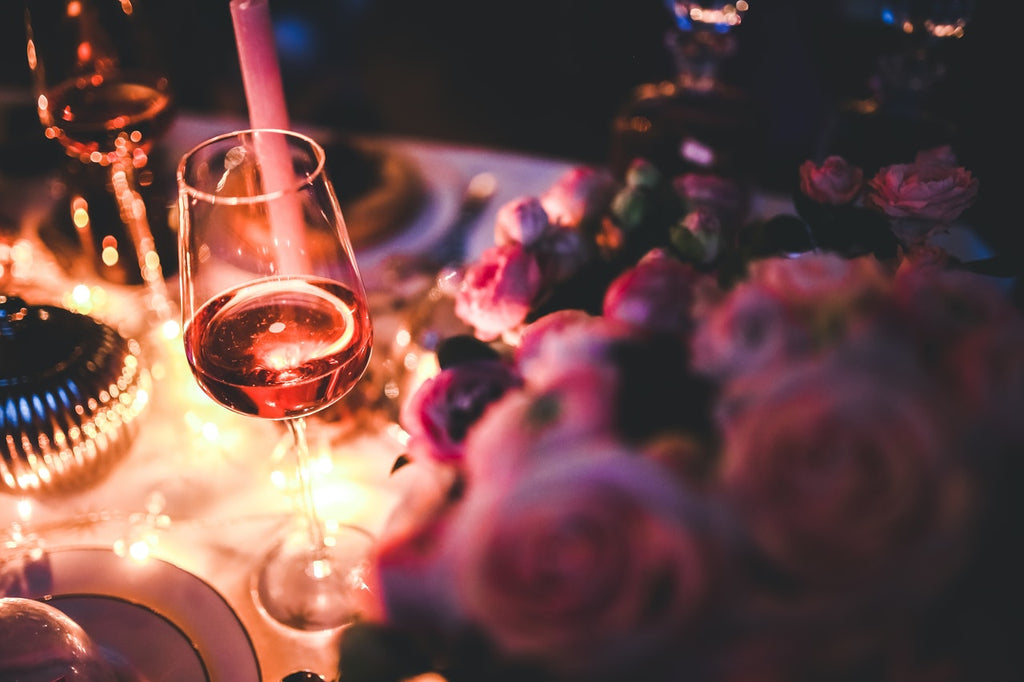Flowers: The Unique Addition of Botanicals to Spirits and Drinks
Posted by BERNADETTE PAMPLIN

Image courtesy: Kaboompics, Pexels
With Valentine’s Day coming up, we’re sure at least some of you will have flowers on your mind. Flowers play an important role in our lives, serving as symbolism for all sorts of meanings as defined by a culture1. Floriography, or flower language, is the art of floral symbolism. Red roses are a symbol of love, red poppies a symbol of sacrifice. There is a whole hidden language of flowers out there that is subjective through different cultures.
A Less Than Romantic History
The origins of Valentine’s Day are hazy, at best. There are two famous Saint Valentines, a Roman Priest and Italian Bishop. Each were executed and became martyrs of the Christian faith, so much so that it is believed the Catholic Church founded St. Valentine’s Day to honour them. That said, it is also thought that this holiday was a cover-up of the pagan festival of fertility Lupercalia. The first official reference to romance for St. Valentine’s Day was actually by our own literary great Geoffery Chaucer, followed by William Shakespeare2.
Image: Anete Lusina

Say It With Flowers
Flowers are a beautiful token of love, and don’t we know it! Giving flowers for Valentine’s Day began as a practice in Victorian times. Today, in the UK, we spend around £267 million on flowers for Valentine's Day3. That said, it’s a drop in the ocean compared to the US where a staggering 250 million roses are produced for the holiday every year, and—according to the National Retail Federation—around 36% of the $20 billion spent on Valentine’s Day 2020 was for flowers4.Floral Gins
Gins are definitely the more common spirit to use botanicals. Gins are already a NGS (neutral grain spirit, essentially a vodka), that is flavoured by redistilling/macerating with botanicals, in particular juniper, but also coriander (to give a citrus and spice element) and angelica/orris (predominantly to work as a fixative, but it does also give gin that warm and sometimes sweet earthy element).
There are other gins with heavier rose flavours to them, and it can really dominate the character of the spirit. However, I’d say Uncle Val’s has the balance just right for those romantics who still love a solid juniper backbone to their drinks.
If you’re knocking up some cocktails to enjoy with your meal, then our Founder, Damien Egan, has shared a brilliant recipe on the Your Drink Box Recipe Directory called an Ol’ Saint Val’s Gin Cocktail.
>>Shop Our Gin Collection

A Little Hibiscus
If you or your loved one has a bit of a creative streak behind the bar/in the kitchen, then floral essences in cocktail bitters can be a fantastic tool for bringing the floral element into drinks or cooking. Dashfire Hibiscus Bitters are an easy way to add a little flower power to your creations. Just a few drops will bring a characterful tartness and beautiful magenta colour.The hibiscus flower has various meanings around the world, ranging from femininity to glory. Hibiscus is also a rising star in the gin world, and we are starting to see more gins that note hibiscus as a flavour or signature botanical.
>>Shop our Hibiscus Cocktail Bitters
The Magic of Butterfly Pea Flower
How would you like to "wow" your loved one with a little bit of magic? Butterfly pea flower has found global fame in the last few years. Ever heard of colour-changing gin? Well, chances are it’s down to this guy. Butterfly pea flower has long been used to make tea in eastern countries, a practice that is centuries old5.

Steeping the flowers results in a bright blue liquid that turns pink with the addition of lemon juice. Distilling it in gin will result in a blue liquid that turns pink with the addition of tonic. It’s a harmless reaction that occurs when the flower mixes with citric acid as the flower is essentially working as a PH indicator.
It’s a truly captivating sight and has taken the gin market by storm, with several companies launching their magic colour-changing gin. And, this marvellous flower is not limited to this one transformation. Adding fuschia roselle hibiscus will turn it bright red.
If you’re planning a romantic night in for Valentine’s Day and you want to “wow” your loved one, then we’ve got you covered with B’Lure, the world's first commercial butterfly pea flower extract. Simply pop a couple of drops into a spirit, then when you add tonic, or lemons and limes, you get some amazing reactions.
>>Shop B’Lure Butterfly Pea Extract
So, whether on the table, in your drink—or both!—if you’re looking to show someone you care this Valentine’s Day, say it with flowers!
About the Author: Bernadette Pamplin

After landing a job in a gin bar, Bernadette became obsessed with gin and sought extensive training to learn all she could about the juniper spirit. Later, she merged her passion for gin and her passion for words becoming a drinks writer. She now pens articles for publications like Gin Magazine, content for Your Drink Box and her own blog, Under The Ginfluence.
She has also served as Brand Ambassador for a large UK Gin Festival and helps organise the Craft Distilling Expo as well as speaking on its panels.
Bernadette has four years experience judging events like Gin of the Year, World Gin Awards, Spirits Business Awards, American Distilling Institute Judging of Craft Spirits, IWSC, and Gin Guide Awards. She loves trying gins, learning to distinguish flavours and how the botanicals and distillation processes create the final result. Very much "under the ginfluence," Bernadette is driven by the spirit's history, flavour and story. While gin is her speciality, she has affection for all spirits.
References
1. https://en.wikipedia.org/wiki/Plant_symbolism
2. https://www.proflowers.com/blog/the-history-of-valentines-day
3. https://www.statista.com/statistics/803395/valentine-s-day-expenditure-by-category-united-kingdom-uk
4. https://www.thespruce.com/valentines-flower-facts-1316129
5. https://en.wikipedia.org/wiki/Butterfly_pea_flower_tea
